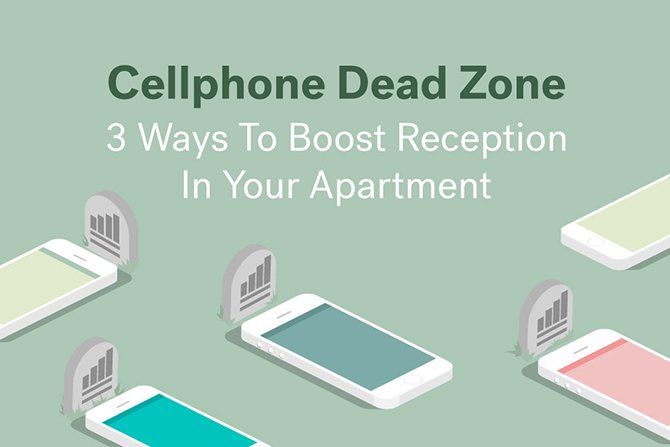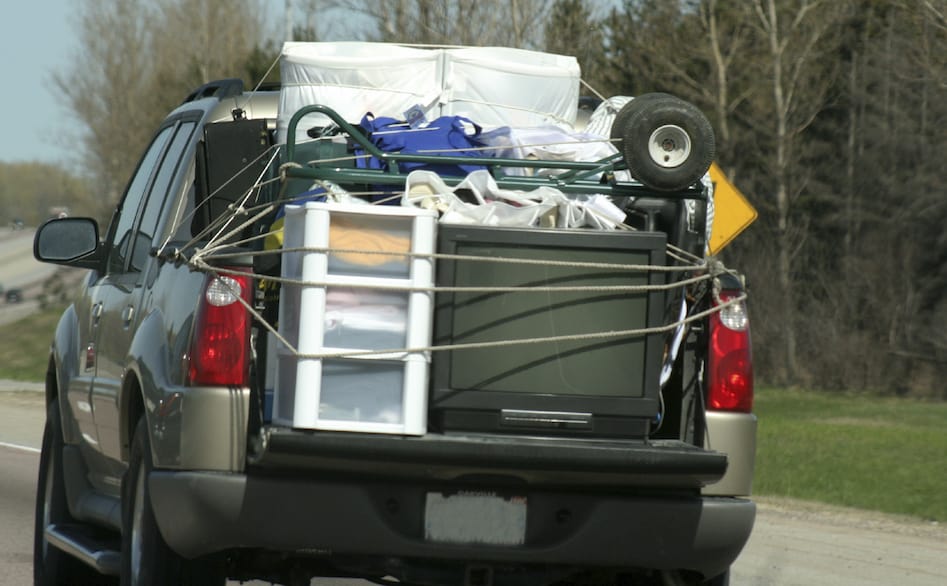7 Tips for Moving on Short Notice
July 29, 2015
Planning a move in the near future? You’re not alone—in the months ranging roughly from May to September, roads are bustling with the activity of what is known as the “on” season for moving companies –when it comes to the summertime, moving tends to stay an incredibly hot (and profitable) industry.
So where do you start? Read our guide below for some tips on ensuring a smart and relatively stress free move when your deadline has come down to the wire.
1. Get Started
When planning
your move on short notice, you’ll want to begin by properly assessing everything that may be required for the weeks (or even months) ahead.
Confirm the fundamental info of your move before delving into the more complicated steps that require making paid reservations and the like—knowing an exact move-in date, etc. will help lay a fundamental groundwork that will allow the process to go much smoother overall.
2. Begin Pre-Packing
You don’t need to wait for every bit of paperwork to be filled out before beginning to pack—in fact, preliminary packing
of less commonly-used rooms can prove to be an outright requirement.
A good rule of thumb is to start packing at least a few boxes per day once you’re sure you’ll be moving in the near future. And start getting your place cleaned up
if you are able to– this will save you cleaning time
later.
3. Make Reservations
This one is no joke—moving during the summer means dealing with the busiest and most booked-solid mover schedules of the year. Arguably the most important factor in avoiding major issues will be to contact your movers of choice the moment your move in date is confirmed.
Otherwise, there’s an unfortunate and potentially disastrous chance that you may find yourself without any movers available in time—definitely the furthest thing from a fun situation to have to deal with.
4. Set Your Own Deadlines
Managing an arduous task like moving on short notice means you’ll need to pay special consideration to the importance of deadlines—in this case, managing your own self-discipline and ensuring things get done in time will be extremely important.
Set your own personal deadlines for when moving milestones should be completed, and before you know it you’ll have formed a realistic (and informed) moving timeline that gives you a clearer understanding of what to expect.
5. Recruit Help from Friends
As challenging as moving tends to be, you can expect to take those challenges and multiply them tenfold if you’re facing them on your own.
Recruiting the help
of even just one or two friends can go an extremely long way in making the process much faster and much less of an overall burden—a committed team of friends can even sometimes knock out an apartment move in as little as one afternoon. Just be sure to reward them with pizza afterwards!
6. Compare Rates
A major factor in ensuring a smooth move without much time to spare will be to lock down an affordable overall rate as early as possible—you won’t want to scramble for a moving package at the last minute, only to find that the one you had in mind will run you considerably more than you wanted to pay.
Price can (and should) serve as a large deciding factor in your choice of movers and services, so there’s certainly nothing wrong with shopping around based primarily on price! Knowing how much you’ll be able to spend will most likely prove to be one of the earliest things you’ll need to get done before you proceed.
7. Label Boxes Smartly
One of the simpler ways to keep your moving process running smoothly can be to come up with a simple method for labeling your personal possessions—a few rolls of colored painter’s tape or something similar will usually be all you need.
Before moving in, coordinate the layout of your destination by deciding on a color (or similar labeling distinction) for each room or major area across your new home. Then, label your boxes and containers appropriately so that the contents intended for each room match their corresponding color.
This will allow you to quickly unload the contents of each room without having to give it too much thought. If your move is extremely short term and you don’t have colored labeling materials on hand, you might consider something as simple as labeling boxes by number or letter.
Source: apartmentguide.com
Share this post
Getting ready to move away from home and into your first apartment is super exciting. However, it can also be incredibly intimidating. After all, renting an apartment is a pretty big deal, and there are a lot of things to consider. Even people who have rented before can get caught up in the process of finding a new place – when it’s your first time, there can be enough new information to make your head spin. Here are 11 things to think about during your apartment-hunting process that will, hopefully, make the whole thing much easier: 1. Upfront Costs Even first-time renters know they’re going to be responsible for their monthly rent, but it’s easy to forget about the upfront costs of renting an apartment if you’ve never done it before. In addition to the monthly costs of apartment living, you’ll almost always have to pay up before you move in – often, before you can even sign the lease. Plan ahead to avoid new-place sticker shock. Nearly all apartment companies will require that you pay a security deposit before you move in. This protects the landlord in case you trash your apartment and skip town. As long as you don’t do that, you should get it back once your lease is up. In addition to the deposit, you may have to pay application fees, or even one month’s rent, before you can get settled into your new place. 2. Long-Term Costs Rent isn’t the only thing you’ll have to pay month-to-month, either. You’ll also have to pay for utilities like heat, gas and electricity. Different buildings have different rules about what you’re expected to pay and what is covered in your rent. If you need to pay for it, you’ll also need to set it up – be ready to reach out to utilities companies to get the services put in your name. Don’t forget renter’s insurance! Some landlords actually require tenants to get a renter’s policy, but you should whether it’s mandated or not. Insurance policies protect you in the case of accidental damage, theft, and disaster. It usually doesn’t cost all that much per month, so you should definitely fit safety net into your budget. 3. What You Need Furnishing a brand-new apartment is super exciting, and you’re probably full of ideas about how you want your new place to look. Before you go wild with your decoration schemes, however, you must make sure you have the basic furniture you’ll need to live. Eating take-out on the floor feels very cool and devil-may-care … for about a day. After that, you’ll wish you had a table. Here’s a quick list of the basic furniture you’ll have to bring in: A bed, a couch, a table, and some chairs. In addition, there are little around the house items you probably won’t have, but will definitely want. These include things like towels, shower curtains, and utensils. Cookware is a must, as well, unless you want to be perpetually tied to delivery and carry-out food. 4. What You Don’t Need You might be tempted to take every little knickknack and item you’ve ever collected with you to your new place. Although this might make your apartment feel well-stocked early on, you’re sure to regret it once you start actually decorating. All the junk you’re packing up now will feel like a complete pain when it gets in the way of having a tidy, put-together place. Instead of moving everything from back home with you when you head into your first apartment, use moving as a chance to purge. Have an honest conversation with yourself about whether you’re holding on to items because they’re useful, or because you’re reluctant to let go. Donate, throw away, or recycle anything you don’t really need – you’ll be glad you did down the line. 5. Lease Terms A lease is often the first legal document a young adult encounters. Although this does make the process a little bit stressful, it also makes it great practice for other contracts later on in life. Learning how to read complicated legal text is a valuable skill, and skimming your lease is an awful idea. Carefully read the entire document, and don’t be afraid to ask questions if there’s something you don’t understand. If you want to be extra certain about the lease before you sign it, ask the landlord if you can have a few days to look it over. Then ask someone you trust, like a family member or experienced friend, if he or she can look it over with you. If anyone in your life is experienced with legal matters (particularly housing issues), they should be able to help you fully understand any confusing clauses. 6. Roommate Worries If you’re moving in with roommates, make sure everyone you’re going to be living with is signing the lease. One or more roommates avoiding the lease spells out bad news later on – if they stop paying rent or decide to up and leave, there’s nothing you can do except pay on their behalf. If you’re thinking of living with someone who refuses to get on the lease, pick a different roommate. 7. Pets Bringing a furry friend with you to your new place? Make sure you talk to your landlord about your pet – or pets – before you sign the lease or move in. Even if you know your building allows pets, it might have restrictions about weight or breed. In addition, most pet-friendly buildings require you to pay a pet deposit, or add an extra pet fee onto your rent. In addition, make sure your apartment has plenty of room for Fido or Felix. If you’re bringing in a dog with lots of energy, it will need plenty of room to run around, and to be exercised outside regularly. Even cats call for extra space – have a plan for where you’ll put things like food, water, and the litter box before you decide on a unit. 8. Location, Location, Location Before you pick an apartment building, make sure you’ve given real thought to where it’s located. Ideally, you’ll be close to all of the essential shops and services you’ll need, like grocery stores and restaurants. How close depends on your lifestyle. If you’re comfortable driving most places, within a couple of miles should do. If you’d rather walk, try to make sure you’re no more than a mile away from the important stuff. 9. Moving Plans Moving is hard work, and you’re probably not going to be able to do it on your own. If you have a lot of friends who are free on your move-in date, ask them if they’d be willing to help you haul your stuff into your new place. This is going to be your cheapest option – traditional friend payment is pizza and beer, and the promise to help out next time they move. If your friends are busy, you may want to look into hiring a moving company. The great thing about these services is that the movers are professionals who have done this a thousand times before, so they’ll know exactly how to load the truck and handle the boxes. These may seem like small details, but they’ll dramatically reduce the time it takes to pack up your stuff and get it into the new apartment. 10. Organization Unless you’re moving into an apartment with an abundance of closet space, you’re probably going to need to come up with your own storage solutions. One of the very best things you can get is under-bed storage bins. As the name suggests, these slide neatly beneath your box springs and live totally out of sight. This is the perfect place to store out-of-season clothes and other small items. If the storage can’t be hidden away, try to find things that look good. One cool way you can sneak storage into your decor is to use on old trunk for your coffee table. It will look totally cool, and you can use it to store away infrequently used items. Bookshelves work well for storing things that are decorative on their own, like figurines, ornaments, and, of course, books. 11. Decoration Scheme The earlier you decide what you want to do, decoration-wise, the easier the process will be. There’s no better time to decorate an apartment than when you first move in – all of your stuff is already out of the way, and you still have all the freedom to sort your items the way you’d like. Unpacking things into their proper place is way easier than moving them later on. Take a look at different design schemes to build some inspiration for your new place. Do you want something rustic and earthy, or sleek and modern? Make lease-friendly changes before you unpack all of your stuff, so you don’t have to deal with a bunch of little items while you’re decorating. This way, your place will look like home as soon as you’re done unpacking.
The bed is one of the most important spots in your home, and spending time making it look a bit more luxurious is a benefit to both your bedroom decor and your mental health. That said, buying beautiful sheets, comforters and pillows can add up and might feel like something you should skip when you are on a tight budget. But, your bed doesn’t have to be basic. Here are some thrifty shopping and design tricks to help you dress a bed on a dime. Look for printed sheets and pillowcases when you thrift I’ve always loved the retro patterns and floral prints that only an eagle-eyed vintage store shopper can find. Many thrift stores don’t often carry a lot of bedding, so you might have to take the time to dig in a little deeper, but you can sometimes stumble on some surprisingly cool designs that will be just the unique detail your bed needs. Or, you could find good quality secondhand plain sheets and pillow cases to experiment with the next suggestion. Add a DIY detail You don’t necessarily have to learn how to monogram to customize your bedding. There are a lot of creative small things you can do to make your bedding unique and luxurious. You can add ribbon or other trim to the edges and surfaces of sheets, blankets and pillow cases to give them a personal touch. Try your hand at simple embroidered motifs or stamped designs. Stitch on tassels or pompoms. No matter which style direction you take, you can add a lot without spending a lot. Focus on the top layer while bulking up with basics Sometimes when a bed feels a little naked and less than luxurious, it’s just too flat or skimpy. You can easily fix that by layering in more basic elements, some that you might already own. Use extra older or inexpensive filler pillows to prop up newer, fresher prettier pillows to add structure and better show off the attractive ones. Fold and layer less decorative blankets and comforters under the prettiest topper to give your bed some bulk. Let the headboard be the show Sometimes a well-dressed bed is one of simplicity when you’ve got a statement-making headboard, which is often just a quick, affordable DIY away. Shop sales with an eye to alter If you know how to sew, shop bedding sales online and in stores with an eye to potentially alter them. For example: two or three different color twin size clearance sale bargain blankets could be cut up and restitched together to create a custom, color-blocked cover for your king size bed.a

“Can you hear me?” “Can you hear me now?” If most of your cellphone conversations begin this way — or if you’ve taken to hanging out a window just to get a signal — you’re not alone. Spotty cellphone service can be especially frustrating when you have full bars in your building’s lobby or hallway but one measly bar as soon as you set foot inside your home. It turns out, there are good explanations for why this occurs (no, the cellphone gods aren’t trying to punish you for posting too many selfies) and solutions that renters can easily implement. Here’s how. Cause #1: The position of your building’s cellphone antenna “Cell carriers in all major cities position their cell sites close to the ground because that’s where most of the people are,” says Graham Caparulo, principal consultant for Diligex, a New York, NY–based managed IT services provider. “On the corners of buildings, you’ll see them 20 to 30 feet up, and they’re angled toward the street.” That doesn’t do you much good, especially if you live on the 30th floor of a high-rise. Cause #2: Building materials can block radio signals Tinted windows (especially the ones found on “green buildings”), concrete, and metal all interfere with cellphone reception — which is why you can often get more bars if you hold your phone out your window or step onto a balcony. Cause #3: You live in a densely populated area Have you ever noticed that your service is slower at night or on weekends, or when you attend a packed basketball game? The more people using a network, the slower it runs. (Kind of like the lines at your favorite coffee joint now that word about their croughnuts has gotten out.) “Each cell tower only has limited radio channels it can use,” says Caparulo. “When it’s full, you’ll have bars but can’t make a call or use data.” Solution #1: Invest in a cellphone booster “Invest” is the right word here, because a cell signal booster will typically set you back between $400 and $1,000. (WeBoost is a popular option.) “A traditional cell signal booster takes in a signal on one end, amplifies it, and spits it out on the other end,” says Caparulo, who cautions that you have to have a good signal to work with in the first place, which may mean putting the booster’s antenna outside your window — a no-no insome apartment buildings. Also, cellphone boosters need to be registered with your cellphone carrier, and the company has the right to withhold its consent for usage, especially if you live in a heavily populated area. Solution #2: Enlist a femtocell “A femtocell, also called a microcell, basically uses your Internet connection to back up your cellphone,” says Caparulo. The device plugs right into your modem or router and uses your Internet connection as a cell signal booster. The only drawback is that typically you have to buy the device directly from your cellular provider, and they cost around $150 to $200. (Note: Some consumers claim to have gotten one for free after lots of complaining.) Also, femtocells work only with your specific provider, so if you have AT&T and your roommate has Verizon, their phone may still struggle to get a signal in your apartment. Solution #3: Enable Wi-Fi calling on your smartphone This feature, available on the iPhone 6 series and many Android phones, allows your phone to use your in-home Wi-Fi connection to make calls. (On the iPhone 6, go to “Settings,” then “Phone,” and it should be the first option.) AT&T, Sprint, and T-Mobile all support Wi-Fi calling — and Verizon has recently begun rolling it out. Not all phones can use Wi-Fi calling, however, so you’ll need to check with your carrier to find out which devices are compatible. Source: Forbes.com ~ By: Trulia










